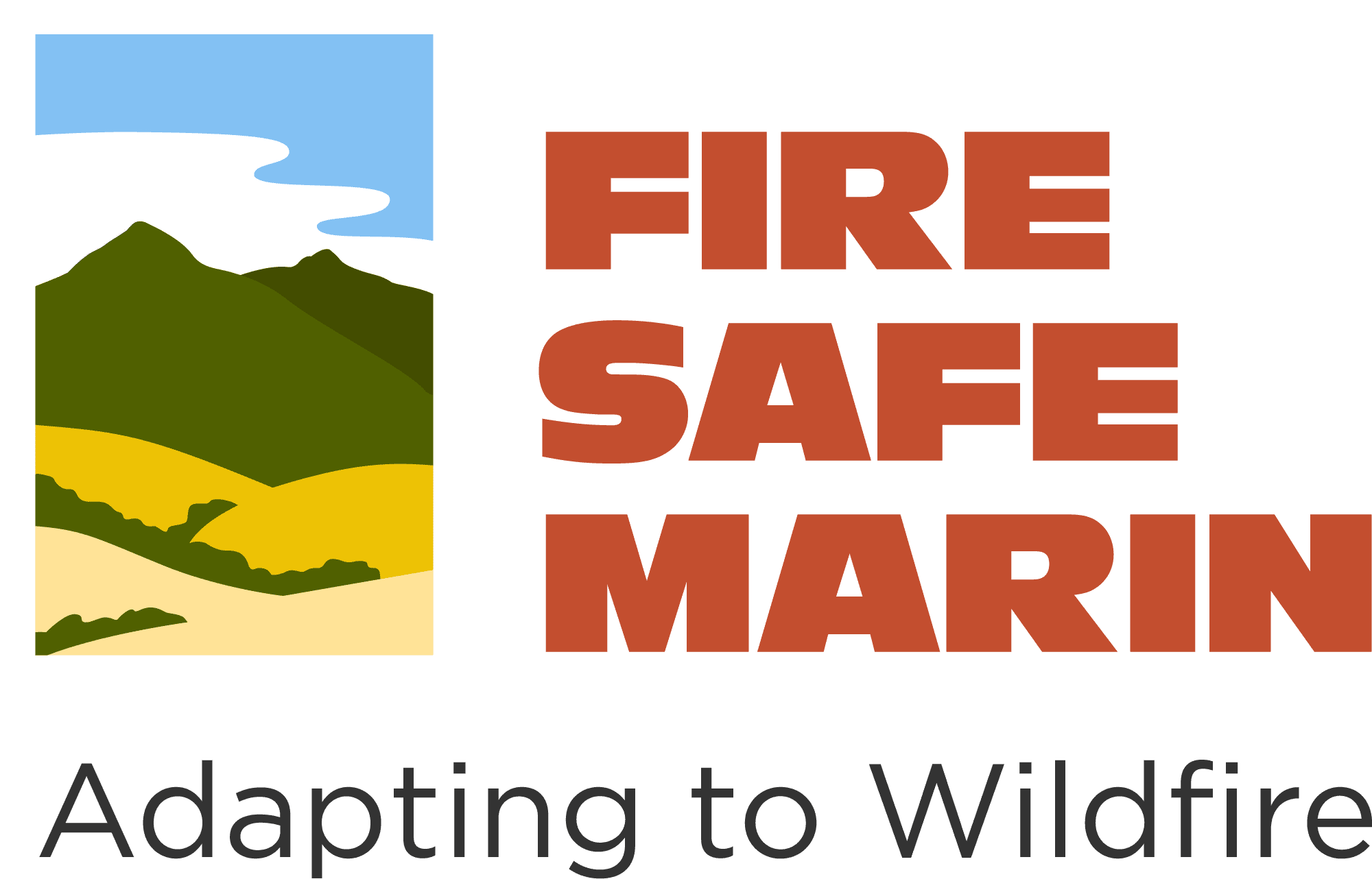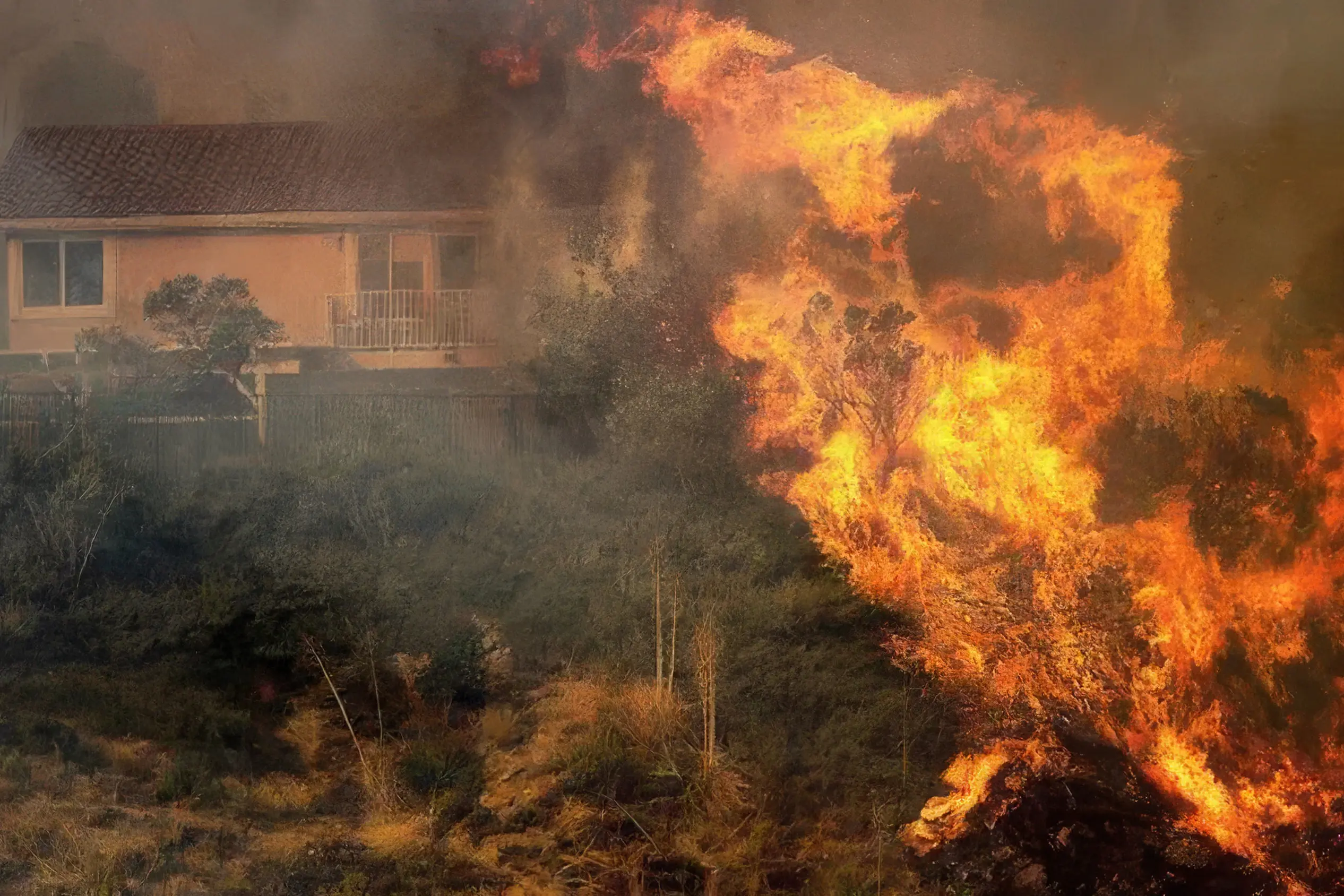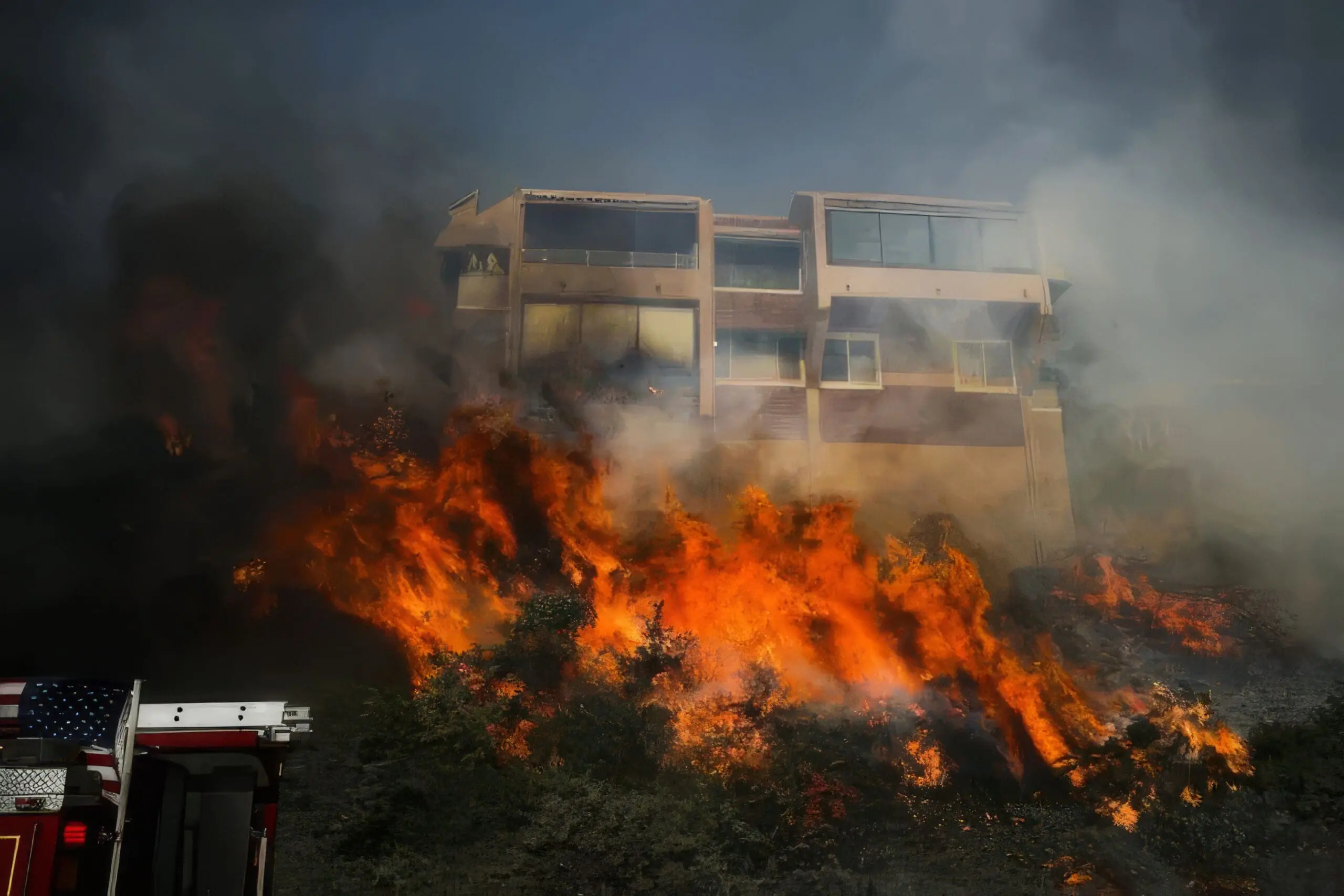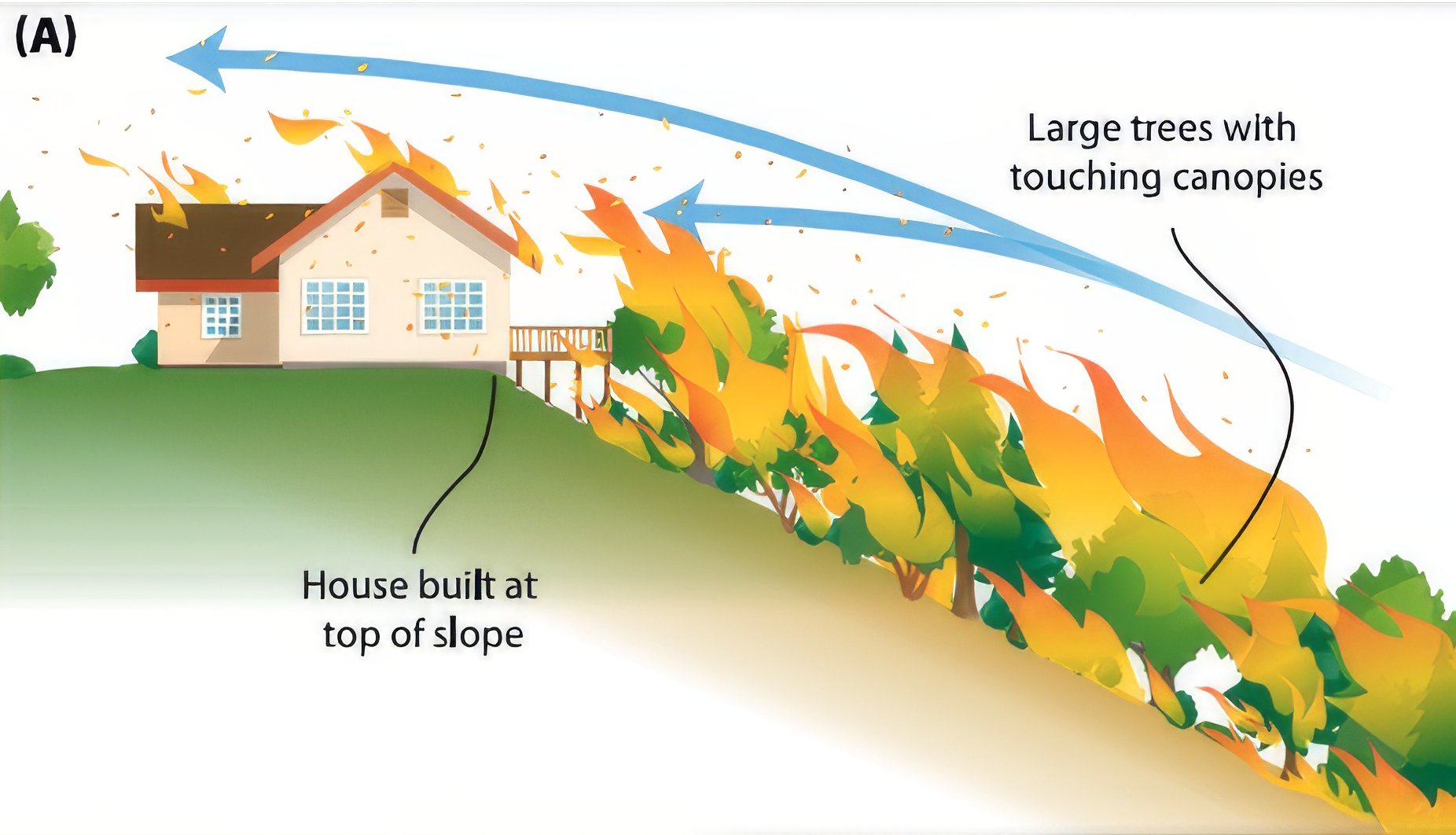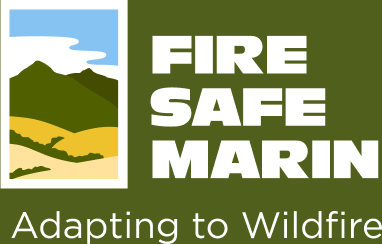IN THE EVENT OF AN EMERGENCY THIS SITE IS NOT MONITORED. FOR CURRENT INFORMATION GO TO HTTPS://EMERGENCY.MARINCOUNTY.GOV.
How to Plan for Steep Slopes
Homes located midway or at the top of a slope are at a higher risk from increased flame length. If this is your home, it is wise to increase the defensible space around your home.
The topography around your home or business, which includes the slope of the land and the direction the structure faces, is a major consideration in assessing the risk of exposure to wildfire. Wildfires burn up slope faster and more intensely than along flat ground. A steeper slope will result in a faster-moving fire, with longer flame lengths. While moderate or steep slopes greater than 20% are very dangerous, any slope can potentially increase the amount of heat a structure will be subject to during a wildfire.
Protecting Mid- or Steep-Slope Properties
If your structure is set back less than fifteen feet for a single-story and 30 feet for a two-story building, take these additional precautions:
- Be more aggressive with your vegetation modification and maintenance plan and more aware of the materials used to build the building, deck, or any outbuildings.
- Push fuel modification area beyond the 100-foot distance, if at all possible. A target for the extended fuel modification area would be between 150 feet and 200 feet.
- Consider increasing the protection of your building by constructing a noncombustible retaining wall to help increase the setback. When making future improvements, incorporate ignition-resistant features and materials into the building and surrounding landscape.

Plant Spacing is Affected by Slope
Uncleared ground fuels provide an open freeway for the rapid spread and increased intensity of fire. Clearance between shrubs should be four to 40 feet depending on the slope of the land and size and type of vegetation.
Check the chart below for an estimation of clearance distance. Any questions regarding requirements for a specific property should be addressed to your local fire official.
